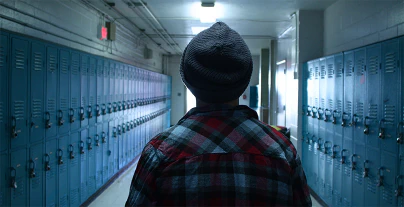Gun Violence in Schools: Does it Cause Lasting Damage?

Does gun violence cause lasting physical and psychological damage to America’s youth? Even in recent years with the COVID-19 pandemic, there has been a significant increase in the amount of gun violence in American schools, according to researchers at Penn State. Besides the obvious immediate effects on schoolchildren, there may be some long-lasting damage to consider.
What long-term mental and physical effects can be expected in young students who have previously experienced a violent event in their schools?
How Gun Violence Affects Student Absences
One prominent issue seen in children who have witnessed or experienced gun violence in schools is behavioral health problems that lead to missing excessive amounts of school. Behavioral health issues cause chronic absenteeism, and up to 25% of children in need of behavioral health care get the help they need. This percentage becomes even lower when only considering students of color.
There are significant implications for the over 1,373 gun violence incidents since 1970. Children who are exposed to violent and dangerous behaviors are more likely to develop behavioral health issues, which, in turn, makes them more likely to deal with chronic absenteeism.
How Gun Violence Affects Student Mental Health
Another prominent issue that young students face regarding gun violence in their schools is declining mental health. As noted in the previous section, students who experience gun violence in schools are far more likely to be aggressive or have other behavioral problems.
In addition to increased aggression and other negative behavior, they are also far more likely to become desensitized to violence. Students are also prone to withdrawing completely or showing symptoms of PTSD.
How Gun Violence Affects Student Physical Health
Students can also suffer physical effects such as headaches, stomach pains, nightmares, sleeping problems, and possibly the urge to skip school from these issues.
These physical ailments can easily be attributed to the increased stress, anxiety, and possible depression the students experience after a traumatic event. The urge to skip school is also not very surprising, as it could be connected to any of these mental and physical ailments.
How Can You Help?
So, how can you help as a leader in your educational facility? What steps can you take before, during, and after a violent event to assist students in their mental and physical well-being and safety?
Boundaries
One of the most important things you can do as a leader in your facility is to create boundaries both with and for the students.
When it comes to creating boundaries with the students, teachers, aides, administrators, and other leaders, all must have appropriate steps to enforce and follow to maintain consistency. For example, students who are aggressive, dismissive, or showing possible signs of violence should be treated with kindness and understanding, but it is also important to find the root of the issues and take appropriate action to prevent escalation.
For example, ensuring that students always have support staff around to listen to their concerns, ideas, and issues is a great way to identify any potential problems before they become violent events.
Also, doing your best not to take your work home with you at night. Burn-out does not just affect you, it will also affect your students’ well-being and their education. School leaders who experience burn-out are less likely to handle any stressful situation calmly, rationally, and patiently.
Stay Safe
During a violent event, it is incredibly easy to let panic and frustration take over. What can you do to make sure that your facility is safe?
Having a set plan in place is, of course, the first step. Does your facility have an Emergency Action Plan (EAP) in place? If not, it is time to start planning. Components of your EAP will vary depending on the number of facilities you are planning this for, the age of the buildings, the number of students and adults, etc. What is most important, however, is to make sure that your plan is clear, concise, and followed by every leader at your facilities.
Once a comprehensive EAP is in place, it is incredibly important that every member of the faculty has access to it and knows their role in an emergency. Training sessions may also be a great way to review the plan.
Ensuring that students are also aware of potential safety issues and how to handle them is vital as well. The more prepared everyone in the facility is, the safer they will be during an unexpected event.
Learn More About Keeping Your Students Safe
Are you looking for more information about staying safe in educational facilities? 911Cellular Technologies can help! Check out our blog for more safety information and our K-12 products for ways you can utilize technology to stay safe during an unexpected event at your facility.
Tags: Preventing school shootings Mental health School safety



